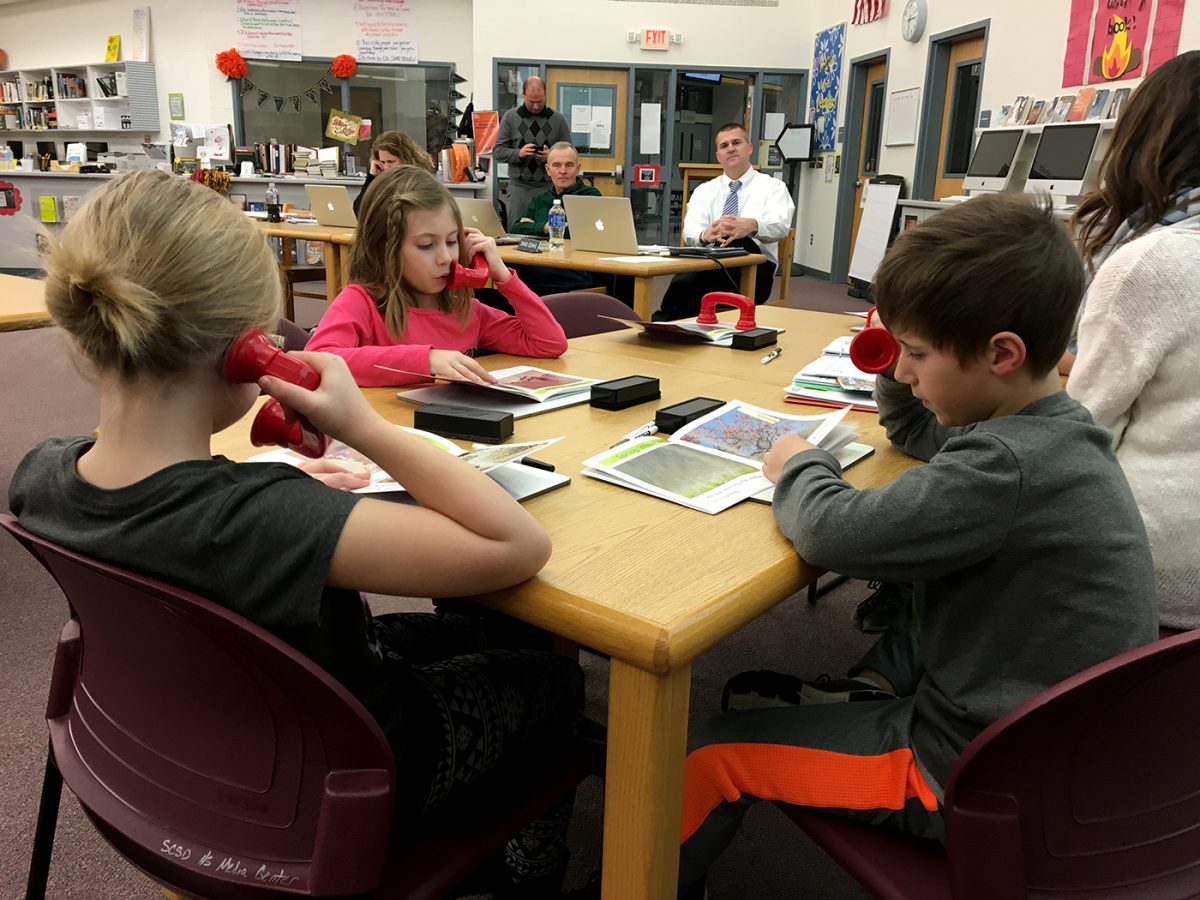By Nora Heaton
Solon Economist
SOLON- Fall, winter, spring and summer passed by at the Solon Community School District Board of Education meeting as a group of first grade students read “Watching the Weather” in front of board members.
The five children, as well as five first grade teachers, were there to demonstrate a Lakeview Elementary reading lesson.
New strategies for reading lessons have emerged from the state’s emphasis on literacy skills. Lakeview school was able to buy new materials for first grade to support the strategies: magnetic letters, letter tiles, sound boxes, white boards, whisper phones, Houghton Mifflin leveled readers, new guided reading books, and graphics for writing, said teacher Jen O’Hare.
Teacher Amy Ewald led the five students through a 20-minute reading lesson at a table during the school board meeting, to give board members a sample of what a typical lesson looks like. Students are organized by ability level into groups of about five for the lesson, so the teacher has time to give each student one-on-one attention. Normally, classes do about four of these lessons each day, amounting to 20 lessons per week, said teacher Betsy Brown.
To start, students reviewed three sight words they already knew: in this case, “are,” “get,” and “new.” Ewald and students then picked up “Watching the Weather.” As they learned from the table of contents, the book promised to teach them about each of the four seasons. As students read through the lesson, they learned from the book that you can play in the leaves in the fall and build snowmen in winter- activities in which they are likely already well-versed. They also learned about degrees measured in Fahrenheit- they practiced saying the word slowly together, “Fahr-en-heit”- and identified that a lower number equaled colder weather.
As superintendent Davis Eidahl pointed out at the meeting, other school subjects are integrated into the lesson. Science curriculum was touched upon through the book’s focus on weather and changing seasons, and the same can be done with books about history or social studies.
But of course, along with science, this lesson included plenty of instruction on reading with a focus on tools and strategies, like decoding and monitoring.
The word “get” made a reappearance in the focus word solving strategy portion of the lesson, as students practiced breaking the word “getting” into a word they already know, “get,” and its “-ing” ending.
To read the text independently, students used “whisper phones,” toy-like phones that allow students to speak into the phone and hear themselves echoed back through the receiver. Even at a whisper level, the tool allows students to hear themselves reading. While the students read, Ewald was able to listen to the students in turn, noting where they excelled and where they struggled, to inform the next lesson.
Coming back together, Ewald taught a sight word from the text: “from.” The students learned to spell the word, formed it with magnetic letters and wrote it on individual white boards.
Teaching the same word a variety of different ways- through letter tiles, writing the word, seeing the word, hearing it and speaking it- allows the program to reach a diverse group of learners. It is not a one-size-fits-all type of program, Eidahl said.
“Reading is a complex process and we try to break it down into parts as much as we can,” said Lakeview Elementary Principal Jodi Rickels, adding that research shows 60 percent of people report they find reading difficult. “These are research-based strategies that bring reading alive for children and help them develop the skills they need.”
Reading through the seasons
February 19, 2016

